Consider an infinita ladder of network shown In fig 5.223A voltage is applied between points A and B. If the voltage is havled after each seciton, find the raito of

Suggest a method to terminate it after a few sections without introducing much error in its attenuation.
Voltage across AB is v, voltage acrpss A'B' os V/2
i.e., voltage across is
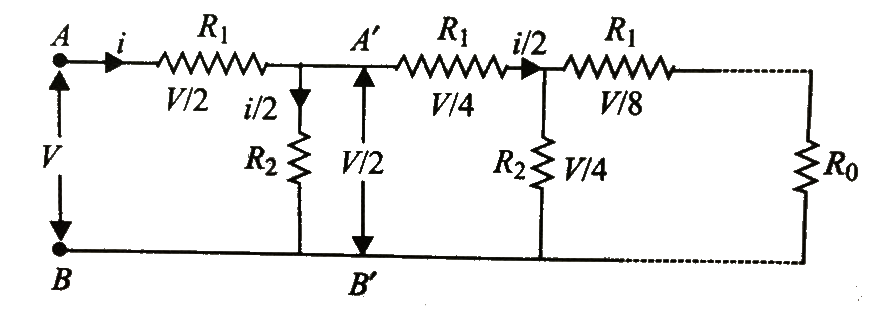
Now from Kirchhoff's law, it is obvious that voltge across is
Resistance will not be affected if equivalent resistance R
becomes independent of number of sections in the circuit. This is only possible if the terminating resistance is it self equal to equivalent resistance the equivalnet resistance
of and is
is in series with it, so equivalent resistance between A and B is
According to proposition
Solving for we get
Thus, the circuit may be terminated after a few section if
resistance is connected in parallel as shown in fig
Topper's Solved these Questions
- ELECTRIC CURRENT AND CIRCUITBook:CENGAGE PHYSICSChapter:ELECTRIC CURRENT AND CIRCUITExercise:Single Correct
Explore 72 Videos
- ELECTRIC CURRENT AND CIRCUITBook:CENGAGE PHYSICSChapter:ELECTRIC CURRENT AND CIRCUITExercise:Multiple Correct
Explore 16 Videos
- ELECTRIC CURRENT AND CIRCUITBook:CENGAGE PHYSICSChapter:ELECTRIC CURRENT AND CIRCUITExercise:Exercise 5.2
Explore 50 Videos
- ELECTRIC CURRENT & CIRCUITSBook:CENGAGE PHYSICSChapter:ELECTRIC CURRENT & CIRCUITSExercise:Kirchhoff s law and simple circuits
Explore 15 Videos
- ELECTRIC FLUX AND GAUSS LAWBook:CENGAGE PHYSICSChapter:ELECTRIC FLUX AND GAUSS LAWExercise:MCQ s
Explore 38 Videos
Similar Questions
Consider an infinite ladder of network as shown in the adjacent figure. A voltage is A applied between points A and B. If the voltage is halved after each section, find the ratio of R1/R2
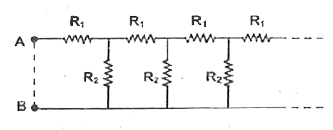
View SolutionConsider an infinte ladder network shown in figure. A voltage V is applied between the points A and B. This applied value of voltage is halved after each section.

View Solution
Knowledge Check
In the circuit shown in fig. 5.265, E1=E2=E3=2V and R1=R2=4Ω. The current flowing between points A and B through battery E2 is
 AzeroB2 A from A to BC2 A form B to ADnone of the above
AzeroB2 A from A to BC2 A form B to ADnone of the above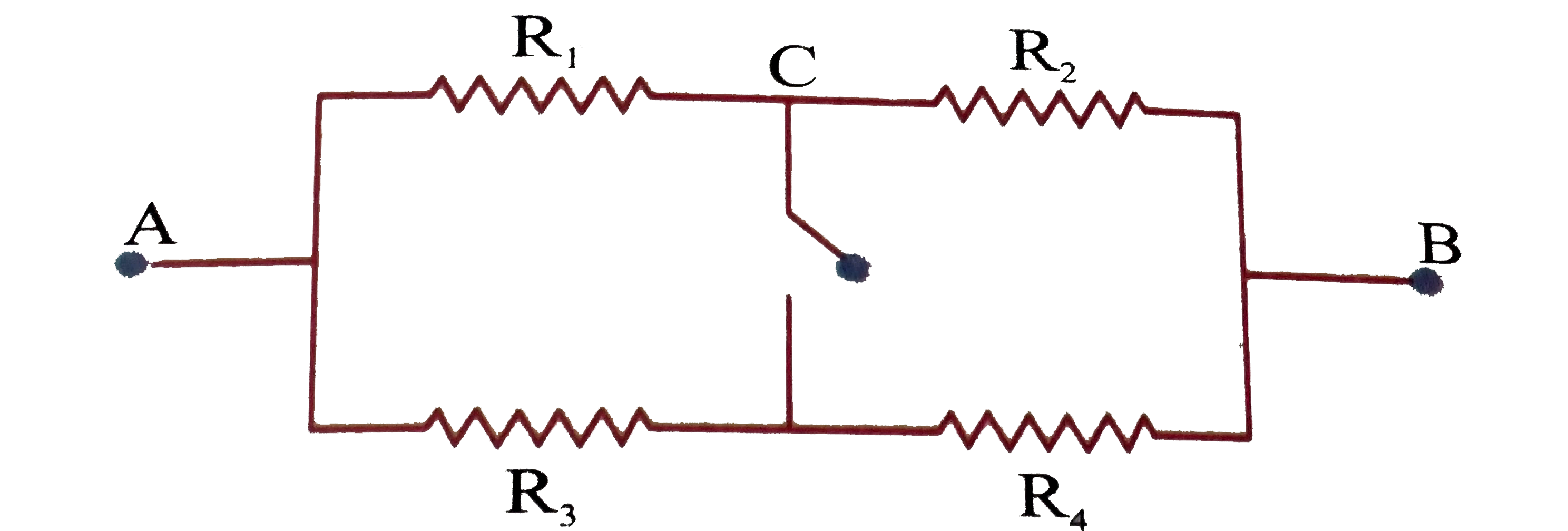
Four resistors R1,R2,R3 and R4 are connected between two terminals A and B iin a network as shown in the diagram. A key K can connect the two points (see diagram) C and D. A constant potential difference (VA−VB)=V is maintained between thhe points A and B
Q. In on connecting the key K, no current flows through the segment CD, whatever potential difference V exists between A and B which of the following cases will satisfy this condition?AR1=1Ω,R2=2Ω,R3=3Ω,R4=4ΩBR1=2Ω,R2=1Ω,R3=4Ω,R4=2ΩCR1=1Ω,R2=2Ω,R3=2Ω,R4=1ΩDR1=R2=2Ω,R3=2R4=4ΩShown in the figure is a semi - circular metallic strip that has thickness t and resistivity ρ its inner radius is R1 and outer radius is R2. It a voltage V0 is applied between its two ends , a current I floes in it . In addition , it is observed that a transverse voltage ΔV develops between its inner and outer surfaces due to puerly kinetic effects of moving electrons (ignore any role of the magnetic field due to the current). Then (figure is schematic and not drawn to scale
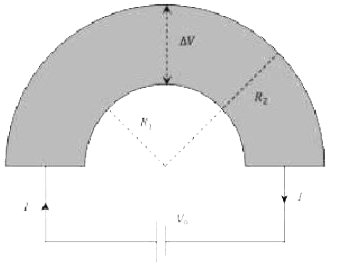 A1=V0tπρIn(R2R1)Bthe outer surface is at a higher voltage than inner surfaceCthe outer surface is at a lower voltage than the inner surfaceDΔV∝12
A1=V0tπρIn(R2R1)Bthe outer surface is at a higher voltage than inner surfaceCthe outer surface is at a lower voltage than the inner surfaceDΔV∝12
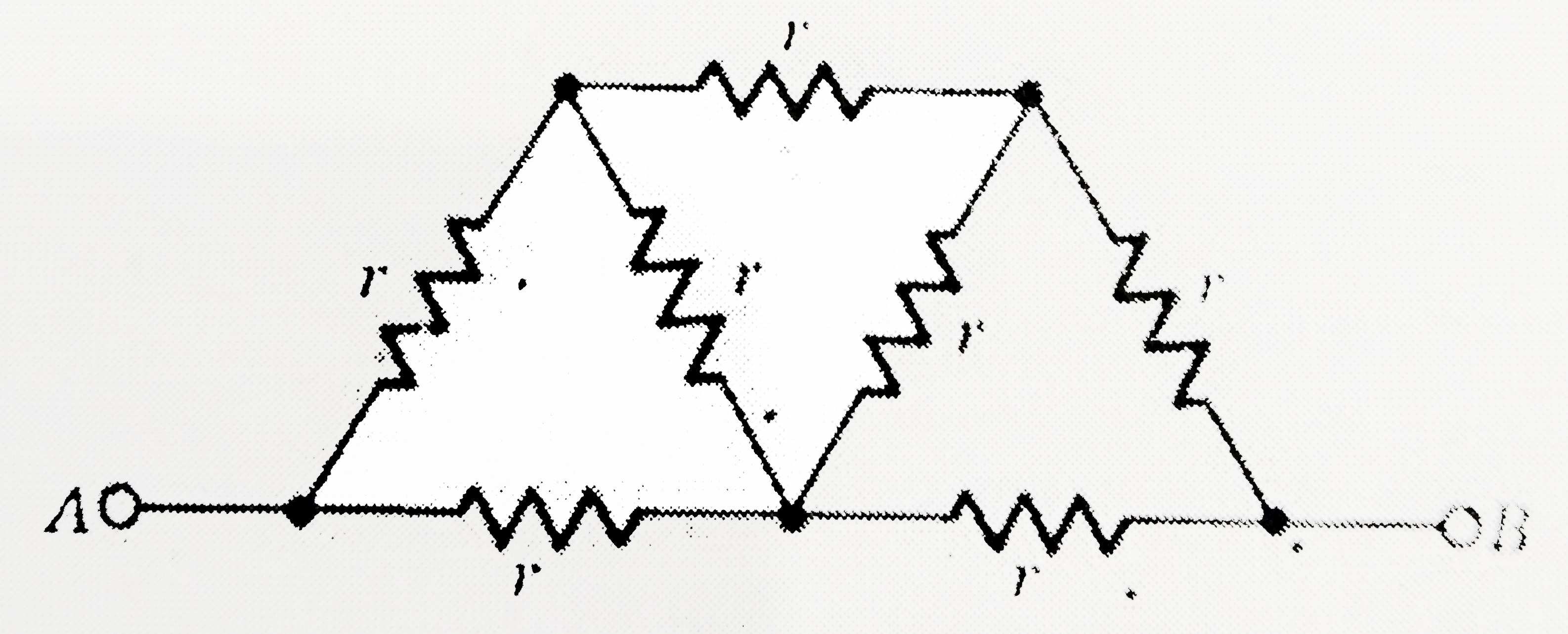
In the network as shown in figure. Each resistance r is of 2Ω find the effective resistance between points A and B.
View SolutionConsider the double cube resistor network shown in fig. Each side of both cubes has resistance R and each of the wires joining the vertices of the two cubes also have same resistance R. find the equivalent resistance between points A & B.
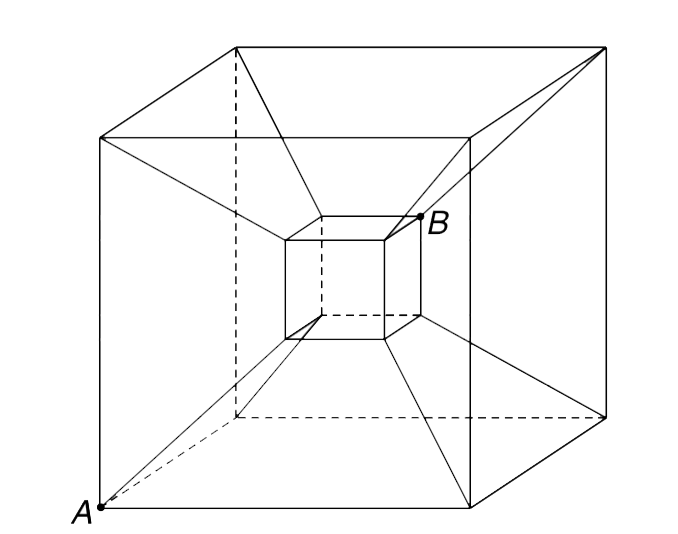
View SolutionFind the resistance of a wire frame shaped as cube (Fig) when measured between points (a) 1.7, (b) 1.2, (c) 1.3.
The resitance of each edge of the frame is R

View SolutionIf each resistance R = 1 ohm then the equivalent resistance (in ohm) between the terminal points A and B in the network shown in figure is
View SolutionTwo metallic wires A and B are made using copper. The radius of wire A is r while its length is l. A dc voltage V is applied across the wire A, causing power dissipation, P. The radius of wire B is 2r, and its length is 2l and the same de voltage V is appoied across it causing power dissipation P1. Which one of the following is the correct relationship between P and P1?
View Solution

